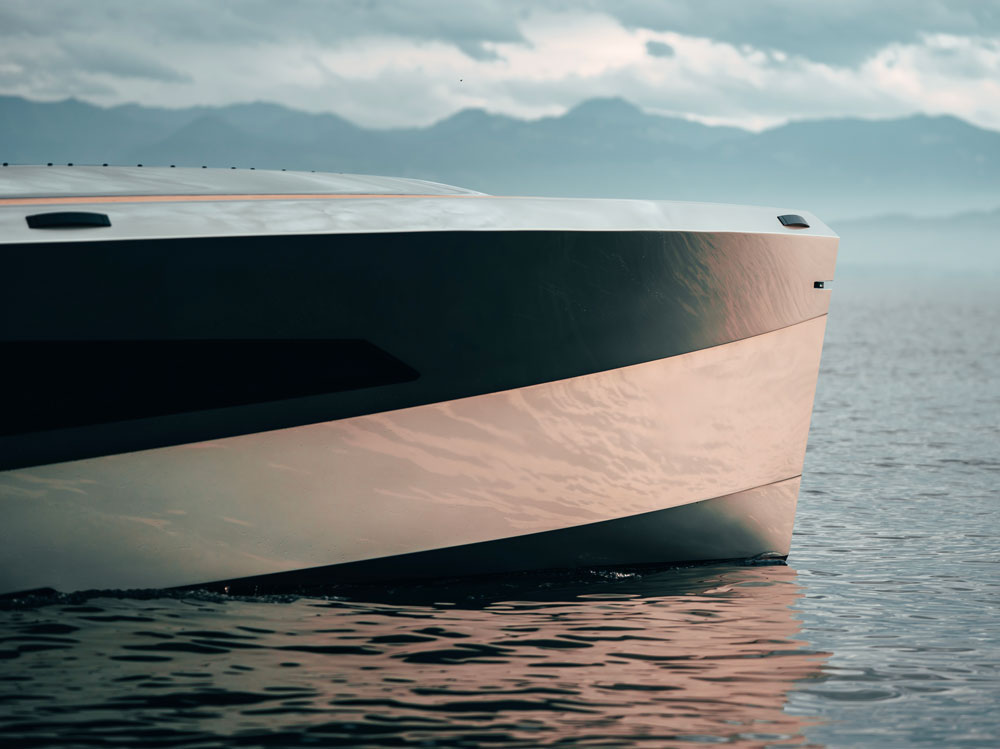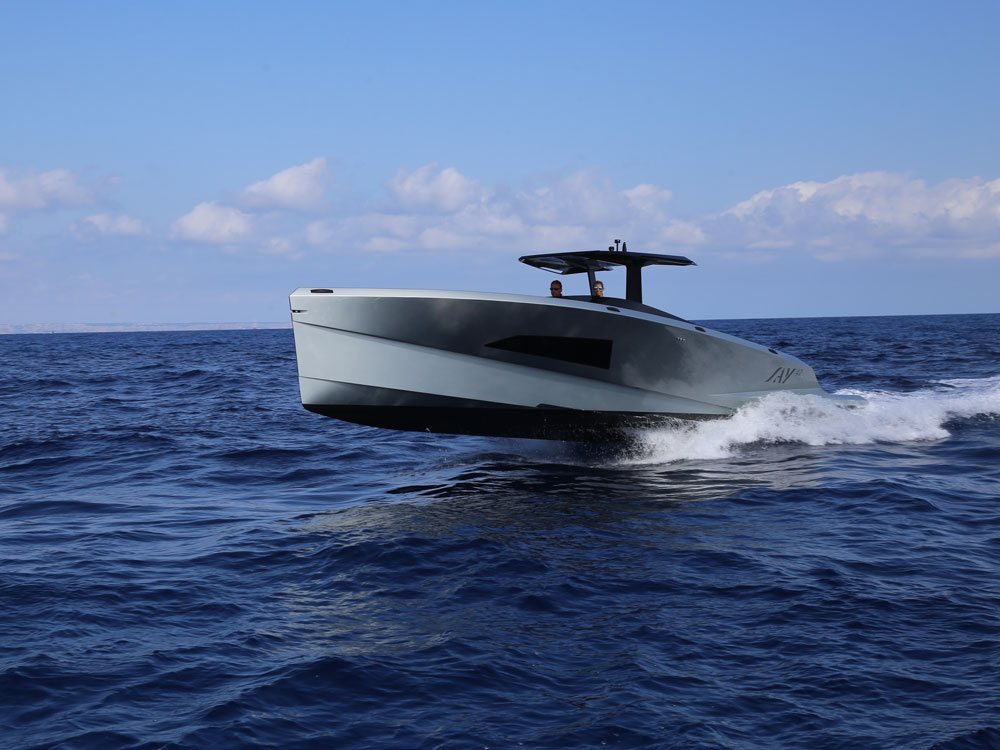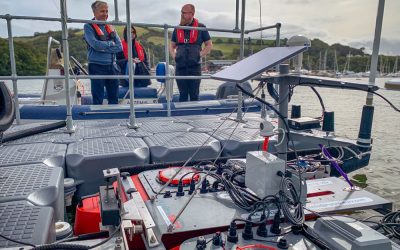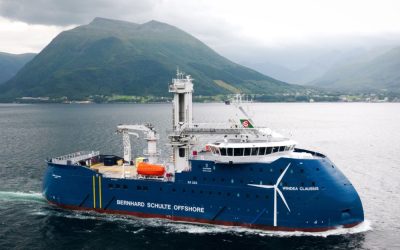It’s possible to cut the kilos through carbon-fibre construction, according to Karl Wagner, SAY Carbon Yachts CTO. However, this process demands rigour – and you can’t make assumptions based on other composite builds.
After a fairly difficult 2024, SAY has returned to the table with new designs. But the company and Wagner himself are both still capitalising on what they know best: how to create extremely lightweight, efficient boats. In fact, these motor yachts really are impressively light: the SAY42, with its 12.96m length and 3.99m beam, comes in at around 4.5tonnes when fully equipped, right down to the twin engines yielding 860hp (641kW) and stern drive. The company favours this configuration partly because it suits the boat’s centre of gravity and internal volume, and these drives can be tilted to accommodate shallow waters.
The same weight consideration applies to the largest, top-of-the-range and completely new SAY52: this is 15.75m-long and 4.4m-wide, but has a dry weight of just 7.5tonnes, and only 10tonnes at maximum load. That “wasn’t so easy” to realise, admits Wagner, because the SAY52 is a good deal larger than its sisters. “A new boat that is 25-30% longer than your existing designs is clearly a big challenge,” he tells The Naval Architect. “Added to which, it has a far higher demand for luxury. There’s a master bedroom with bathroom and all the extras that go with it… everything needs to feel completely premium, but it still needs to be light.” Just out of production, the SAY52 is fitted with Volvo Penta engines delivering 880hp (656kW) and, despite all the trimmings, a top speed of around 45knots.
Underpinning each design is carbon fibre’s rigidity. Carbon fibre is much lighter than aluminium, and the construction comprises a layer each side of high-density foam core, which itself adds stiffness by resisting sheer and compression forces. These fibres and cores are vacuum-infused together with epoxy resin – a tougher option than the usual polymers.
It’s also worth noting the major joints aren’t just bonded, but completely laminated – the point is to avoid sudden load steps between the various elements. “The way we do it makes a very stiff structure,” says Wagner. “In fact, the whole thing works like a monocoque.” So, while these boats have been subject to the kind of rigorous structural analysis that, on other vessels, would have resulted in more stringers and internal bulkheads, here there are fewer. In turn, this opens up the internal spaces and can also mean a smaller engine, which again reduces weight and drag.
In short, these motor yachts take advantage of a positive efficiency spiral: “Our boats are around half the weight of the competition and consume about 30-40% less energy,” Wagner explains. Further, while this makes for generally better handling, he admits it’s their ability to step up the pace that really give the new SAY models their punch: “It’s in the acceleration you really feel it…and we really like acceleration.”

Trials showed that modifying the hull to the Petestep design resulted in an extra 3knots and an efficiency boost of about 10% (image: SAY)
Despite carbon fibre’s pivotal role, you can’t just use it and trust everything will suddenly become possible. As Wagner underlines, there’s no point in simply taking a GRP design and trying to execute it in carbon fibre – you’d gain a hefty bill and lose the advantage.
Firstly, there’s the hull itself. Swedish-based Petestep has taken charge of the form below the waterline, says Wagner, adding: “These boats have a very sleek deep-V and relatively small volume in the bow, which, together, gives a perfect, soft ride through waves.” Further, it’s shaped to avoid spray generation, which can account for a significant proportion of the hull’s hydrodynamic resistance. The idea is lateral ‘steps’ (Wagner underlines these aren’t conventional chines) that deflect the water and turn it aft, decreasing the wetted surface area and friction while also putting some of the otherwise lost energy to use.
So, does it work? “On the SAY42, we modified the hull from an un-stepped form to the Petestep design,” says Wagner. “We gained 3knots and about 10% efficiency.”
However, there are further areas where the carbon fibre helps out: for example, the SAY52’s stability requirements are actually met by a Seakeeper 3 gyrostabiliser, a feature usually reserved for a boat that’s 20-30% shorter.
Bringing all this together is a rigorous job, admits Wagner. “We have a close look at every single component – cables, hatches, everything,” he says. “It’s always a fight – everything needs room, and especially in the cabin. At a very early point, you need to decide how heavy the boat will be, because that clearly has a big influence on the whole design.”
Are there definite downsides to a carbon fibre construction? Certainly: the rigidity leads to more noise compared to a glass fibre build, admits Wagner. “You don’t really care about it when you’re underway,” he says, “but we had to work on noise insulation for when the boat’s at anchor.”
For the full story, check out the April 2025 issue of The Naval Architect




